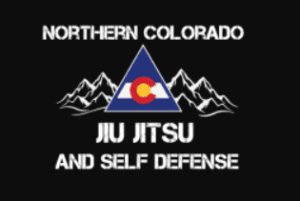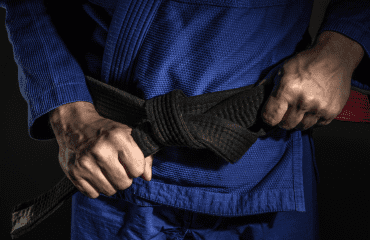
As personal safety becomes increasingly important, Brazilian Jiu-Jitsu (BJJ) has gained recognition as a highly effective approach to self-defense. Known as the “gentle art,” BJJ empowers individuals to defend against larger attackers using leverage and technique rather than physical strength. This martial art offers practical skills while building confidence, discipline, and resilience. Brazilian Jiu-Jitsu practitioners have become renowned for their ability to successfully defend themselves using the techniques of this art.
In this article, we’ll explore what makes Brazilian Jiu-Jitsu an ideal self-defense system, how it empowers individuals of all backgrounds, and why it’s highly valued among both martial artists and those seeking a practical approach to personal safety. At NOCO Jiu Jitsu and Self Defense, anyone can begin their journey toward confidence, self-defense skills, and physical and mental strength through the art of BJJ.
How Did Brazilian Jiu-Jitsu Originate as a Self-Defense Martial Art?
Brazilian Jiu-Jitsu (BJJ) is rooted in a fascinating blend of cultures, having originated as an adaptation of Japanese Jujutsu from Feudal Japan. This evolution began when Mitsuyo Maeda, one of the jiu-jitsu masters, traveled from Japan to Rio de Janeiro, Brazil, and began teaching the art to a young Carlos Gracie. With time, Carlos and his brother Helio Gracie developed Brazilian Jiu-Jitsu as a unique form of self-defense, focusing on techniques that allow a weaker person to control or neutralize a stronger opponent. Over the years, the Gracie family established BJJ as a dominant force in martial arts, building what would become the famous Gracie Academy.
What Sets Brazilian Jiu-Jitsu Apart from Other Martial Arts?
Unlike many martial arts that rely on strikes or brute force, BJJ emphasizes leverage and technique. Known as the “gentle art”, it allows practitioners to overcome an opponent without needing excessive physical strength. Techniques such as chokes, submission holds, and joint locks enable BJJ practitioners to control or incapacitate attackers. This makes BJJ an excellent self-defense method, especially for those who may not have a significant size or strength advantage over their attackers.
How Can BJJ Help Weaker Individuals Defend Themselves Against Stronger Opponents?

Brazilian Jiu-Jitsu was developed with the weaker person in mind, giving them tools to defend themselves against stronger opponents. BJJ is all about using the opponent’s strength and force against them, making it an ideal art for self-defense situations. The techniques rely on balance, leverage, and angles rather than raw power, allowing smaller individuals to control, submit, or escape from larger attackers effectively.
Why Are Submission Holds Effective in Self-Defense?
Submission holds are a cornerstone of Brazilian Jiu-Jitsu, allowing a BJJ practitioner to neutralize threats without causing permanent harm. By learning techniques like the rear naked choke and arm bars, BJJ practitioners gain the ability to subdue an attacker with minimal injury. This control aspect is invaluable in self-defense scenarios, providing options beyond strikes and punches, which can escalate violence rather than defuse it.
How Does Brazilian Jiu-Jitsu Build Confidence and Self-Esteem?
Learning Jiu-Jitsu is about more than physical techniques; it’s also a powerful way to build confidence and resilience. As students progress from the white belt through the ranks, they learn to face challenges and push beyond their limits. Over time, BJJ instills a strong sense of discipline, perseverance, and self-defense readiness, qualities that empower individuals both on and off the mat.
What is the Role of Training Partners and Instructors in Learning BJJ?
A crucial part of BJJ training involves practicing with a training partner. At NOCO Jiu Jitsu and Self Defense, students benefit from guidance under one experienced instructor who creates a safe, supportive environment. Training with other students and partners allows practitioners to practice techniques in a controlled setting, making them prepared for real-world self-defense scenarios.
How Does Brazilian Jiu-Jitsu Emphasize Control and Restraint?
One unique aspect of BJJ is its focus on control rather than aggression. Rather than relying on strikes or dangerous moves, BJJ teaches students to control their opponent effectively, making it especially suited for self-defense. Techniques focus on neutralizing an attacker’s aggression while minimizing harm, making it a martial art of choice for people who prioritize self-defense and de-escalation.
Is Gi or No-Gi Training More Effective for Self-Defense?

BJJ training can be practiced with a gi (traditional uniform) or no gi (without the uniform). Each style offers distinct advantages for self-defense. Training with a gi simulates scenarios where clothing might be used for control or leverage, while no gi training mirrors real-life situations where the grip of a uniform isn’t available. Both approaches are valuable, and NOCO Jiu Jitsu and Self Defense provides opportunities to train in both, preparing students for various self-defense contexts.
What Can Beginners Expect in Their First Few Classes?
New students of Brazilian Jiu-Jitsu can expect to begin with foundational moves, such as basic escapes, a submission hold, and positional control techniques. BJJ training often starts with learning how to fall safely and grappling basics. At NOCO Jiu Jitsu and Self Defense, instructors guide beginners through techniques like takedowns and escapes, creating a supportive atmosphere where each student can build confidence in their abilities.
How Does Brazilian Jiu-Jitsu Prepare You for Real-Life Situations?
Brazilian Jiu-Jitsu’s focus on ground fighting, grappling, and submission techniques makes it particularly effective in real-world self-defense situations. Practitioners learn not only how to take down an attacker but also how to maintain control on the ground. This hands-on approach teaches students how to remain calm, think strategically, and employ techniques that can defuse dangerous encounters effectively.
Why is Brazilian Jiu-Jitsu Popular Among MMA Fighters?
Brazilian Jiu Jitsu has become an essential skill in Mixed Martial Arts (MMA). BJJ practitioners like Renzo Gracie have showcased the effectiveness of BJJ techniques in the UFC, solidifying its reputation as a top self-defense method. Its emphasis on ground control and submissions gives a BJJ fighter a distinct advantage, which has helped propel BJJ’s popularity within the MMA community.
What are the Core Techniques in Brazilian Jiu-Jitsu for Self-Defense?
The core techniques of Brazilian Jiu-Jitsu include positional control, escapes, chokes, and joint locks. Techniques like the rear naked choke and the armbar enable practitioners to control or incapacitate their attacker effectively. These techniques are easy to learn but require practice to master, providing BJJ practitioners with an array of self-defense tools for real-life scenarios.
Ready to Empower Yourself with Brazilian Jiu-Jitsu?

Whether you’re interested in boosting your confidence, learning practical self-defense, or simply enhancing your fitness, Brazilian Jiu-Jitsu can provide a transformative experience. Join the community at NOCO Jiu Jitsu and Self Defense to start your journey into this rewarding martial art. Discover how BJJ can change the way you approach life and help you become prepared for anything.
In exploring Brazilian Jiu-Jitsu, we find a self-defense system that’s as effective as it is empowering. With deep roots in martial arts history and a clear focus on technique over brute strength, BJJ is accessible to people of all ages and skill levels. Let’s take on the world with the skills and confidence we gain through BJJ, embracing the philosophy of this gentle jutsu and the resilience it fosters.
Frequently Asked Questions:
- How did Brazilian Jiu-Jitsu originate as a self-defense martial art?
Brazilian Jiu-Jitsu (BJJ) originated as an adaptation of Japanese Jujutsu brought to Brazil by Mitsuyo Maeda. Carlos and Helio Gracie then developed BJJ as a unique form of self-defense, focusing on techniques that allow a weaker person to control or neutralize a stronger opponent.
- What sets Brazilian Jiu-Jitsu apart from other martial arts?
Unlike many martial arts that rely on strikes or brute force, BJJ emphasizes leverage and technique, making it the “gentle art” that allows practitioners to overcome opponents without needing excessive physical strength.
- How can BJJ help weaker individuals defend themselves against stronger opponents?
BJJ was developed with the weaker person in mind, giving them tools like submission holds, chokes, and joint locks to defend themselves against larger, stronger attackers by using their opponent’s force and strength against them.
- Why are submission holds effective in self-defense?
Submission holds allow BJJ practitioners to neutralize threats without causing permanent harm, providing options beyond strikes and punches that can escalate violence, and instead focus on control and restraint.
- How does Brazilian Jiu-Jitsu build confidence and self-esteem?
Learning BJJ instills a strong sense of discipline, perseverance, and self-defense readiness, empowering individuals both on and off the mat as they progress through the belt ranks.
- What is the role of training partners and instructors in learning BJJ?
Training with other students and partners allows practitioners to practice techniques in a controlled setting, while guidance under experienced instructors creates a safe, supportive environment for learning.
- How does Brazilian Jiu-Jitsu emphasize control and restraint?
BJJ focuses on controlling and neutralizing an attacker’s aggression while minimizing harm, making it well-suited for self-defense scenarios that prioritize de-escalation over aggression.
- Is Gi or No-Gi training more effective for self-defense?
Both Gi (with the uniform) and No-Gi training have value, as Gi training simulates scenarios where clothing can be used for control or leverage, while No-Gi mirrors real-life situations without the grip of a uniform.
- What can beginners expect in their first few BJJ classes?
Beginners start with foundational moves like basic escapes, submission holds, and positional control techniques, learning how to fall safely and practicing grappling basics under the guidance of instructors.
- How does Brazilian Jiu-Jitsu prepare you for real-life self-defense situations?
BJJ’s focus on ground fighting, grappling, and submission techniques makes it particularly effective in real-world self-defense, teaching students how to remain calm, think strategically, and employ techniques to defuse dangerous encounters.




